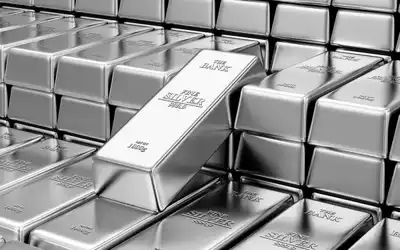Even large investors often purchase silver through retail dealers, although their markups per unit may be lower due to the larger volume of their purchases.
In retail settings, silver dealers buy the metal wholesale and then mark it up to cover their costs and earn a profit. The markup includes expenses related to operating a retail business, such as location rent, utilities, staff wages, inventory maintenance, and more.
Silver transactions commonly involve smaller quantities, ranging from one to ten ounces, and retail dealers usually keep more inventory of these sizes. Larger bars, such as 100-ounce bars, are also available at some dealers, and while their markup percentage may be lower, it is still significant.
The markup on silver can range from 10% to 30% or even more, depending on the quantity purchased and the specific dealer. This markup impacts the ultimate return on the investment, and investors need to see a substantial price increase, often around 30% or more, to break even when selling their silver.

Even if an investor does not have immediate plans to sell the silver, they will eventually incur the full spread when they decide to sell it. Whether selling during their lifetime or leaving it to their descendants, the markup will play a role in the transaction and impact the overall return on the investment.
The Massive Spreads With Retail Silver Brokers
For large investors, the spread may be smaller compared to retail investors, but it still remains significant in comparison to other securities.
In the futures market or with contracts for difference (CFD) brokers, silver trading is often done on paper without taking physical possession of the metal. This method is more efficient and allows for lower transaction costs compared to buying and selling physical silver.
Given the higher spread and associated costs, investors who take a position in silver need to be prepared for longer-term holdings to see significant price increases before breaking even. However, market risks may prompt investors to consider exiting the trade earlier than originally planned. Any liquidation of silver positions involves additional trading costs, including shipping, storage, insurance, and the spread, which can impact overall profitability.
For those choosing to buy physical silver from dealers, it’s essential to view transaction costs as sunk costs and consider them in the overall position. After placing the buying order and committing to the trade, it’s important not to let the incurred costs influence future decisions. Once the deal is executed, it’s crucial to execute the planned strategy with a level-headed approach and without being overly influenced by past transaction costs.
Why Would Investors Hold Physical Silver Anyway?
Historically, investors had no choice but to buy physical silver, but with the advent of contracts for difference (CFDs), exchange-traded funds (ETFs), and electronic trading, alternative ways of investing in silver have become more accessible and cost-effective.
However, owning physical silver can still serve as a hedge against extreme economic conditions, providing some investors with peace of mind and security. For wealthy individuals, the cost of the hedge may be relatively insignificant compared to their overall wealth, making it a worthwhile precaution to protect their lifestyle.
It’s essential to assess the cost of the hedge against its potential benefits and consider that economic changes usually happen gradually, allowing time for adequate preparation. While owning physical silver might not be a necessity, some investors find psychological comfort in its tangible nature, and it may satisfy their risk aversion tendencies.
Nonetheless, for most individual investors, leaving silver buying to entities with more significant buying power and expertise may be a more efficient and cost-effective choice. These entities can navigate the market more effectively, reducing the spreads and transaction costs associated with physical silver ownership.
Ultimately, the decision to invest in physical silver or explore alternative silver investment options depends on an individual’s risk tolerance, financial objectives, and personal preferences.
Ways to Buy Silver
Silver coins, in particular, often come with a higher markup due to the additional collector’s value attached to them, making bars a more cost-effective choice for those primarily interested in the silver content.
While silver coins might be a bit more liquid in some instances, dealers these days have no real preference, and both bars and coins can be easily bought and sold. The denominated value of silver coins is typically much lower than the value of the silver itself, so they are not practical as currency in everyday transactions.
It’s worth noting that silver is bulkier compared to gold, meaning larger quantities are needed to cover the same investment amount, and this can increase shipping costs for both purchases and sales.
Local banks might offer precious metals, but they often don’t buy them back, requiring investors to go through major dealers, which may involve additional shipping costs unless there is a local dealer nearby.
Before purchasing physical silver, it’s crucial for individuals to carefully consider their reasons for doing so and evaluate whether more efficient alternatives, such as ETFs or other silver investment vehicles, might better serve their needs. While owning physical silver may have its advantages, it may not be the most practical or cost-effective choice for many investors.




